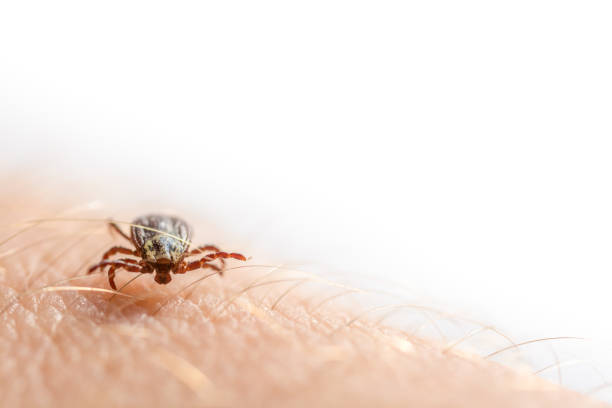New study shows how the Crimean-Congo haemorrhagic fever virus enters our cells
Researchers at Karolinska Institutet, in collaboration with JLP Health and others, have identified how the tick-borne Crimean-Congo haemorrhagic fever virus enters our cells. The results are published in Nature Microbiology and are an important step in the development of drugs against the deadly disease.
Crimean-Congo haemorrhagic fever virus (CCHF virus) is spread through tick bites and can cause haemorrhagic fever. The disease is serious and has a mortality rate of up to 40 per cent depending on the health status of the person infected. Common symptoms include fever, muscle pain, abdominal pain, joint pain, vomiting and haemorrhaging that can cause organ failure.
The disease has spread to Europe
The virus is present in around 40 countries, including Central Asia, the Middle East and parts of Africa. In recent years, the disease has spread to new geographical areas as a result of climate change, including Spain and France. The tick species that can spread the disease has also been observed in Germany and Sweden. There are currently no effective treatments for the disease.
In a new study, researchers at Karolinska Institutet in Sweden and others have found that the virus enters our cells via a protein on the cell surface, the so-called LDL receptors that regulate blood cholesterol levels.
To identify the protein, the researchers used human mini-organs grown in test tubes and an advanced stem cell library from JLP Health. The same platform has previously been used to identify how the Ebola virus enters cells.
The results were also confirmed in tests on mice, which showed that mice lacking the LDL receptor did not get as sick as others.
Researchers want to trick the virus
The discovery is an important step towards developing drugs for Crimean-Congo haemorrhagic fever, according to Ali Mirazimi, adjunct professor at the Department of Laboratory Medicine, Karolinska Institutet, and one of the researchers behind the study.
“Once we know which receptor the virus uses, we can produce the receptor in test tubes and administer it as a drug,” he says. “Then we can trick the virus into binding to those receptors instead of to the cells and thus stop the virus from spreading in our bodies.”
This knowledge is essential if the disease were to become more common and spread to new areas. Normally it takes many years to develop a drug, but the COVID-19 pandemic and the development of the SARS-CoV-2 vaccine showed that it can be done much faster if everyone decides it is a priority.
Ticks are spread by migratory birds
“This is an important step in our preparedness for the disease,” says Ali Mirazimi. “Crimean-Congo haemorrhagic fever is a disease we would rather not have. The ticks are spread by migratory birds and have already been found in Sweden. If the disease starts appearing in more places, we may already have a drug that we can take into clinical trials.”
The research was conducted in collaboration with the Medical University of Vienna, Austria, Helmholtz Centre for Infection Research, Germany, the National Institutes of Health, USA, and the company JLP Health. It was financed mainly by the Swedish Research Council and the EU. No conflicts of interest have been reported.
Full bibliographic information
Published on 28/03/2024 by Karolinska Institutet
Publication: “Crimean-Congo Hemorrhagic Fever virus uses LDLR to bind and enter host cells”, Vanessa M. Monteil, Shane C. Wright Matheus Dyczynski, Max J. Kellner, Sofia Appelberg, Sebastian W. Platzer, Ahmed Ibrahim, Hyesoo Kwon, Ioannis Pittarokoilis, Mattia Mirandola, Georg Michlits, Stephanie Devignot, Elizabeth Elder, Samir Abdurahman, Sándor Bereczky, Binnur Bagci, Sonia Youhanna, Teodor Aastrup, Volker M. Lauschke, Cristiano Salata, Nazif Elaldi, Friedemann Weber, Nuria Monserrat, David W. Hawman, Heinz Feldmann, Moritz Horn, Joseph M. Penninger, Ali Mirazimi,
Article: Nature Microbiology
DOI: 10.1038/s41564-024-01672-3
Link: https://doi.org/10.1038/s41564-024-01672-3





